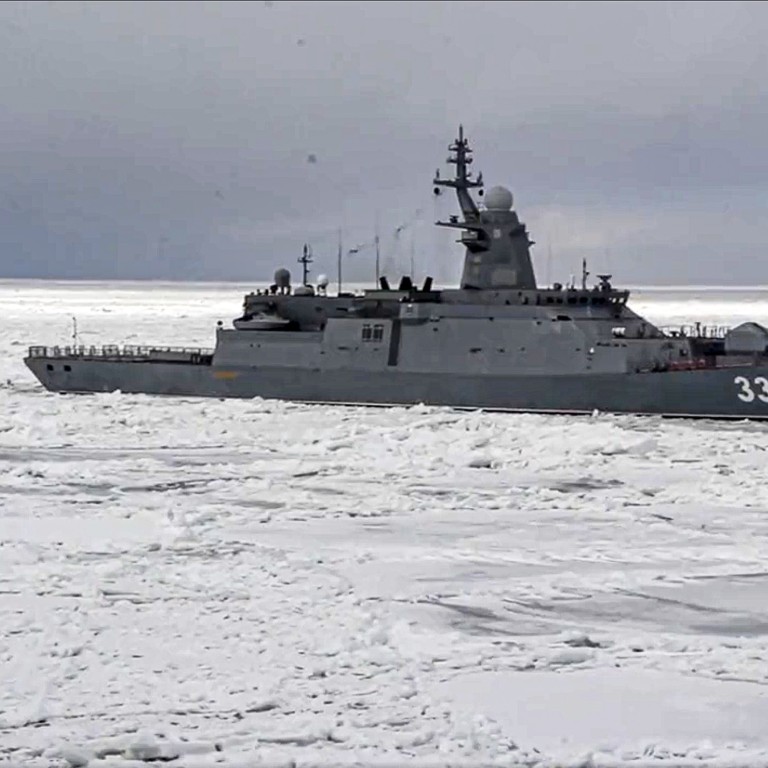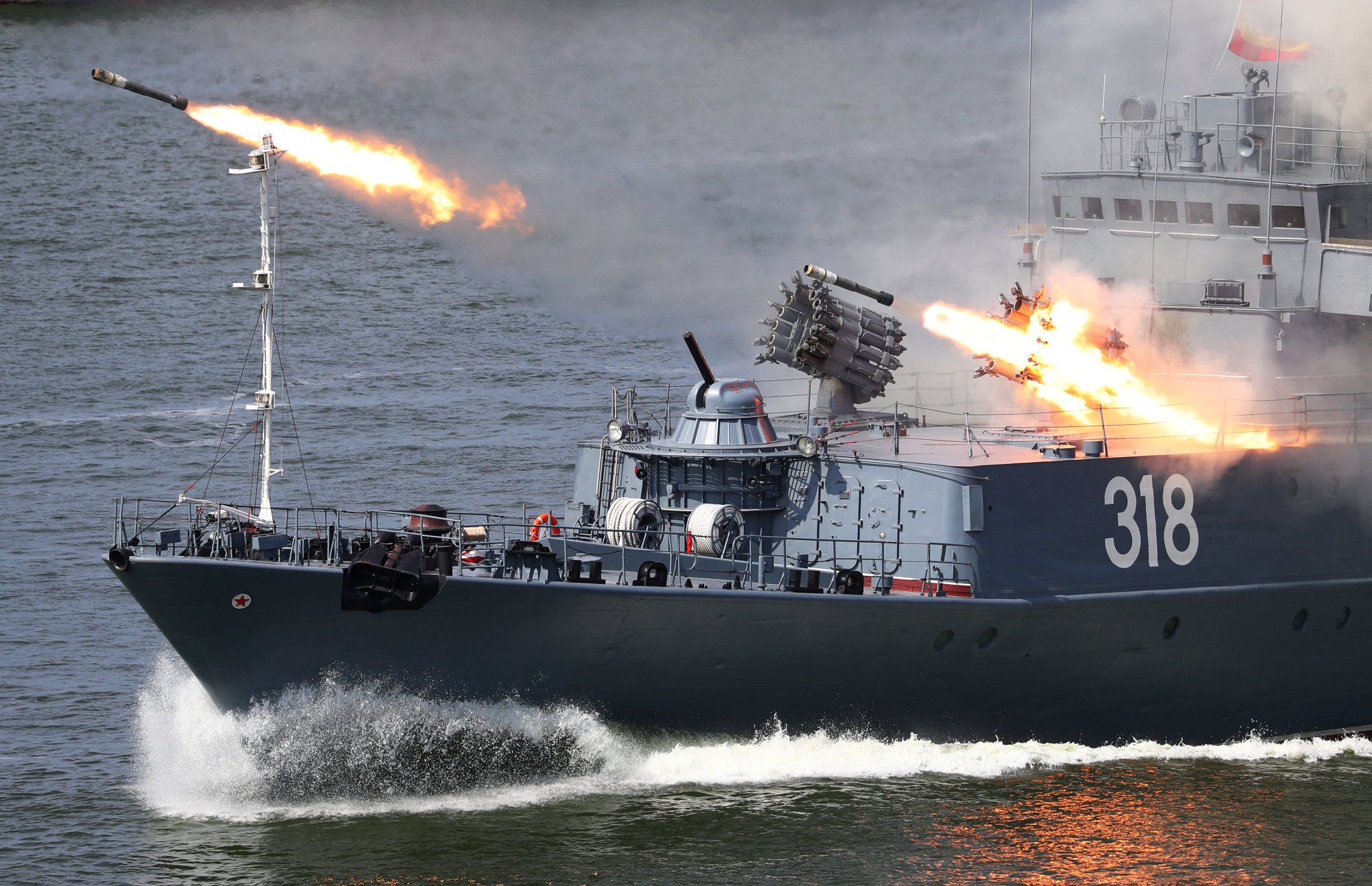
Russia ramps up military activities around Japan in ‘sabre-rattling’ move as Tokyo faces energy security dilemma
- Military moves in waters disputed by Tokyo and Moscow come amid Japan’s sanctions against Russia for Ukraine invasion
- Analysts say Tokyo has bigger concerns – how to ensure energy security while keeping pressure on Vladimir Putin to end the war
Japan is keeping a close eye on Russia’s ramp-up in military activities in its Far East region, with Tokyo increasing the number of reconnaissance patrols by its Self-Defence Forces.
The Tsugaru Strait separates Japan’s main island of Honshu and the northern prefecture of Hokkaido, and is considered international waters open to foreign ships. It connects the Sea of Japan to the Pacific Ocean.

Japan’s Defence Minister Nobuo Kishi told reporters last Friday the fleet movement was believed to be part of Russia’s ongoing major naval exercises in the region since last month.
He said the exercises are “apparently to show off its naval capability spanning from the East to the West, in unison with the Russian military movement in and around Ukraine,” Kyodo News reported.
The movement of the warships coincided with reports from Russian news agency TASS of the launch of advanced S-300V4 surface-to-air missiles from Etorofu.

James Brown, an associate professor of international relations at Temple University who specialises in Russia’s relations with its Far East neighbours, said the recent Russian military activities were “no coincidence”.
Ukraine crisis leaves Asian economies facing ‘disastrous’ price rises
“The Russian side sees the need to retaliate and while they do not have many ways that they can retaliate in terms of economic sanctions, they do have military instruments,” he said, pointing to the intrusion into Japanese airspace off Hokkaido by a Russian helicopter in the days immediately following the invasion of Ukraine.
“Russia is not going to invade Hokkaido, but this is clearly sabre-rattling – and the sabre is now out of its scabbard,” said Brown.
“These moves are also part of a broader aim by Russia to show that while it has made a significant commitment in forces to Ukraine, that does not mean it is weak elsewhere and it retains the ability to operate in the Far East.”
Yet while Japan will be watching Russia’s moves closely, it is used to such military activities and would likely be more preoccupied with bigger concerns, said Brown.
This includes the future of the Sakhalin-2 liquefied natural gas plant, which is a joint project between Moscow and Japanese trading firms Mitsui & Co and Mitsubishi Corp. While many Japanese companies are halting their Russian operations, they are finding it harder to untangle themselves from about US$8.4 billion worth of investments in Russian energy facilities, according to consultancy Wood Mackenzie’s Lens data analytics platform.
Why US pressure for sanctions on Russia leaves Japan ‘a bit stuck’
Brown said he believed Russia would want to carry out joint exercises with the Chinese military at this point – pointing to their joint bilateral exercise in the Tsugaru Straits in October – but that it was “unlikely”.
“China wants to play the role of the responsible stakeholder and will want to stand back until the situation has blown over,” he added.
Yakov Zinberg, a professor of international relations specialising in East Asian affairs at Tokyo’s Kokushikan University, said Tokyo was keeping a “relatively low profile” in its response to the recent Russian military activities.

This is largely because Tokyo does not want to rock the boat more than it has to, so as to ensure energy supplies continue to flow to Japan. At present, around 8 per cent of Japan’s oil comes from Russia, he pointed out, and Tokyo will be watching closely for pressure on the alternative routes from the nation’s energy suppliers, most of which come from the Middle East.
Japan is also closely watching developments in the European Union, which relies on Russia for just under 30 per cent of its crude oil and 45 per cent of its natural gas, and has therefore exempted energy from sanctions. If the EU halted imports of Russian energy, however, Japan would come under intense pressure to follow suit. Kishida has already called on Middle East countries to step up output of oil and there are suggestions that a high-level government mission will travel to the region in the coming days to reinforce that request.
Zinberg does not, however anticipate China providing the support that Moscow has reportedly requested.
As jets scramble, Japan-Russia islands dispute ‘is dragging in China, US’
“Russia is aware that China has its own national interests and will not expect Beijing to support all its endeavours,” he said, pointing to China’s refusal to provided parts for civilian aircraft that have been effectively grounded by international sanctions.
“We should raise a voice of opposition in unison,” Abe said at a speaking engagement to mark the 65th anniversary of ties between Japan and Malaysia.

US National Security Adviser Jake Sullivan is due to meet China’s top diplomat Yang Jiechi to discuss Ukraine on Monday in Rome and the spokesperson for China’s Embassy in the US said he had not heard of Russia’s request to China for help.
The Ukraine situation was “disconcerting”, said Liu Pengyu, the spokesperson and China supported and encouraged “all efforts that are conducive to a peaceful settlement of the crisis”.
Said Brown of Temple University: “China … [is] trying to come up with a response that would show they are committed to a strong partnership with Russia. The test will come if that partnership shows signs of becoming a formal alliance. That would be a very worrying development for Japan.”

